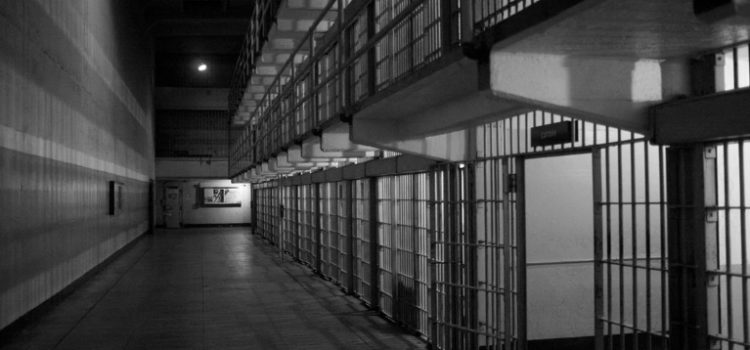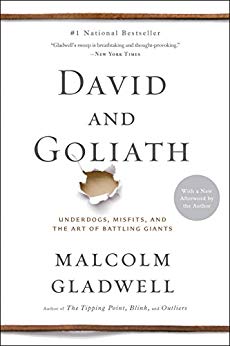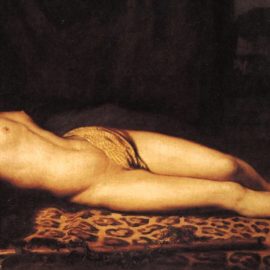

This article is an excerpt from the Shortform summary of "David and Goliath" by Malcolm Gladwell. Shortform has the world's best summaries of books you should be reading.
Like this article? Sign up for a free trial here .
What is the Three Strikes Law? Is it possible that it does more harm than good?
The Three Strikes Law is a California law that doubles the prison time of the offender of a second serious crime and makes a 25-year sentence mandatory for repeat offenders.
We’ll cover what the numbers say about the effectiveness of the Three Strikes Law.
We live in a “U-shaped world,” meaning more power does not necessarily equal more compliance from those over whom we exert it. Overusing (or abusing) our power gets us in trouble. To use our power effectively, we need to use it moderately. We also need to compensate for power’s limitations with forgiveness.
Looking at the relationship between crime and punishment, we can see how forgiveness might be a more appropriate response to a situation than exerting your power.
In particular, we’ll look at how the Inverted U applies to crime and punishment and the Three Strikes Law. As a society, we operate on the assumption that the tougher we are on crime, the less crime there will be. This is true up to a certain point, at which an increased severity of punishment ceases to matter. As we move further toward the right side of the inverted U, it’s possible that cracking down on crime actually starts to make the crime situation worse.
The Three Strikes Law
Let’s take a look at the Three Strikes Law as an example. California implemented the Three Strikes Law to decrease crime. Under the 1994 law, if you’re convicted of a second serious offense, you serve double the time. If you commit a third offense, serious or minor, you serve a mandatory sentence of at least 25 years.
Californian Mike Reynolds lobbied for the law when a crystal-meth addict brazenly shot his 18-year-old daughter in the head outside a diner. Reynolds promised his daughter, on her deathbed, that he would work to prevent the same thing from happening to anyone else. He also wanted justice.
Did the Three Strikes Law Have its Intended Effect?
Apparently. From 1994, when the referendum was signed into law, to 1998:
- The homicide rate dropped by 41.4%
- Convictions of rape dropped by 10.9%
- Robbery dropped by 38.7%
- Assault dropped by 22.1%
So it was an unequivocal success? Not exactly. California’s crime rates had already begun to decrease before the enforcement of the Three Strikes Law. At the same time, they were decreasing across the country, in areas that didn’t have a version of the Three Strikes Law. Studies on the law’s effectiveness are mixed.
Why Might the Three Strikes Law Be Ineffective?
1) The Three Strikes Law depends on the rationality of criminals. The Three Strikes Law is based on the idea that criminals behave rationally—If the consequence is more jail time, people will think twice before committing a crime. But most criminals don’t sit around weighing the risks and benefits of a crime they’re planning. Many repeat offenders are drug addicts. The crystal-meth addict who killed Reynolds’ daughter would later say of his thought process that he wasn’t “thinking much a nothing.”
When researchers interviewed armed robbers, many said that thinking about getting caught was a distraction, so they pushed it out of their minds. One said that he gets high so that by the time he’s committing a crime, he doesn’t care about what happens to him.
The success of the Three Strikes Law depends, in part, on criminals thinking ahead. But criminals generally don’t think ahead. Criminals also don’t have a stake in society; their position as outlaws makes them disinclined to care what society thinks of them.
2) The Three Strikes Law assumes that the more criminals in jail, the fewer out there in the community, committing crimes. But the math breaks down here. In California, the average age a criminal gets his third strike is 43. If he’s in prison for the minimum of 25 years, he’ll get out at age 68.
How many crimes does a person commit between the ages of 43 and 68? Studies say, not many.
What the Three Strikes Law does is shield us from criminals right when they’re ceasing to be dangerous.
How Might the Three Strikes Law Increase Crime?
1. The Three Strikes Law negatively impacts the families of criminals. Many men in prison have children. It’s hard for a father to support his children (both emotionally and financially) from prison. Having a parent in prison increases a child’s chances of becoming a juvenile delinquent by 300-400% and of developing a psychiatric disorder by 250%.
2. The Three Strikes Law negatively impacts communities. When the criminal returns to his community, his job prospects are dismal, he has lost touch with many of his friends, and time behind bars has changed him. Now, the burden of supporting him as he transitions back to a life of freedom is placed on the community.
That burden is sometimes too much for a community to shoulder. Researchers examining crime in Tallahassee, Florida have attempted to find the point at which the inverted U starts to turn down (the point at which more prison time leads to more crime). They concluded that if more than 2% of a neighborhood’s residents go to prison, the crime rate in that neighborhood the following year increases.
An Alternative to the Three Strikes Law
Mike Reynolds chose to deal with his daughter’s death with his Three Strikes Law. Wanting to develop a policy to prevent more violence is an understandable reaction to a child’s death, but it’s not the only reaction. Another parent of a murdered child is Wilma Derksen. Derksen’s 13-year-old daughter was kidnapped, tortured, and raped on her way home from school; 7 weeks later the police found her body, frozen, in a shed.
Rather than lobby to increase the punishment for such crimes (as Reynolds, the original lobbier of the Three Strikes Law, did), Derksen and her husband, who are Mennonites, sought forgiveness. They knew that whatever power they possessed was limited, and were skeptical that exerting it would do any good.
The Derksens realized that excessive punishment can have unintended consequences on the inverted U curve. It’s possible that the Three Strikes Law does more harm than good.
———End of Preview———

Like what you just read? Read the rest of the world's best summary of "David and Goliath" at Shortform . Learn the book's critical concepts in 20 minutes or less .
Here's what you'll find in our full David and Goliath summary :
- Why being the underdog can actually be an advantage
- Why you shouldn't be afraid of powerful giants
- Strategies to get an edge when you're overpowered






